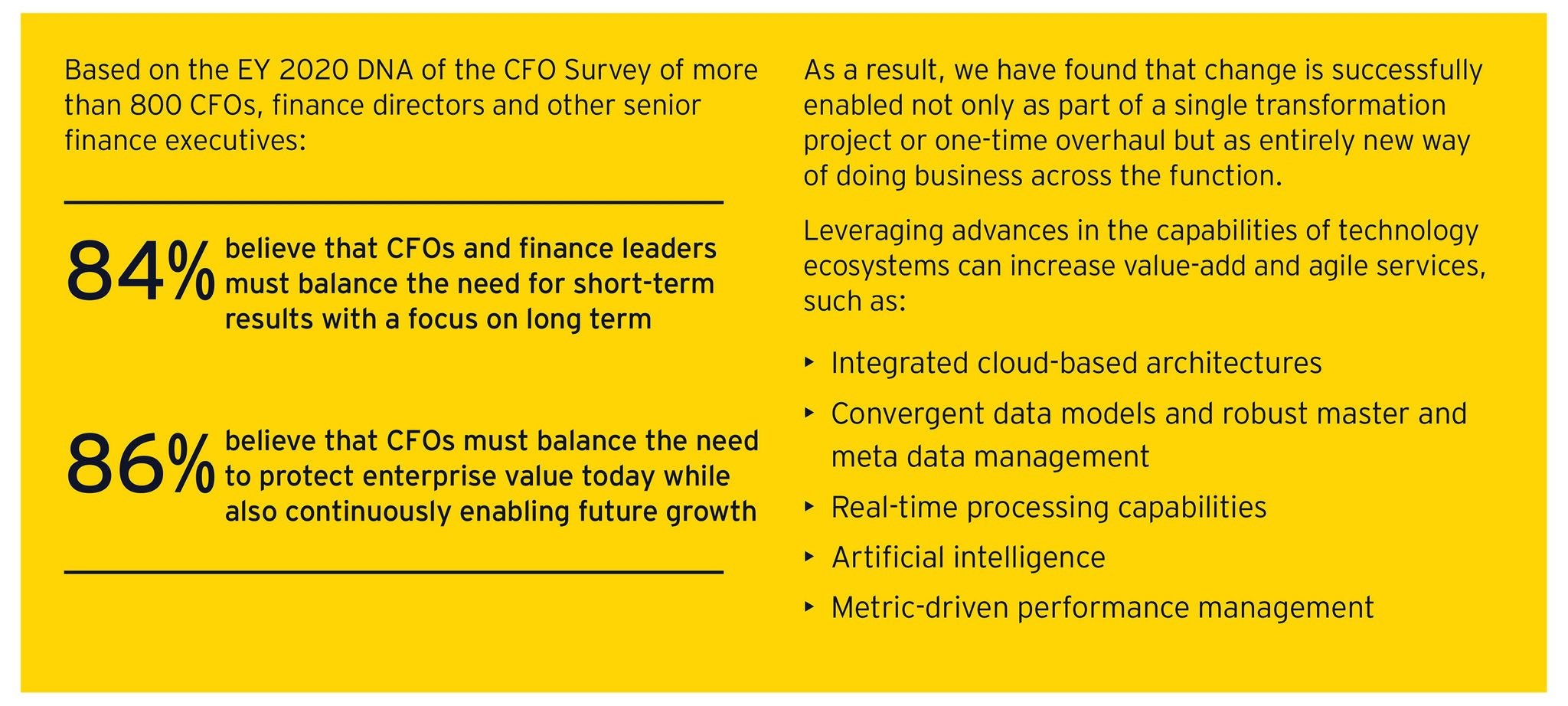EY refers to the global organization, and may refer to one or more, of the member firms of Ernst & Young Global Limited, each of which is a separate legal entity. Ernst & Young Global Limited, a UK company limited by guarantee, does not provide services to clients.
How EY can help
-
We help clients transform finance functions to be a strategic business partner for the business via value creation and controllership activities.
Read more
Key considerations
We have found the key to successfully support shifting demands is to design a modernized delivery capability in a way that builds agility into the structure of the finance function with hiring not overly influenced by brief increases and decreases in demand for skills. To deliver effectively against today’s demands, finance leaders should consider employing delivery models that can achieve the following:
- Optimize demand management that includes the intake process, prioritization and quality control on requirement definition
- Shift the cost-management focus to outcomes as opposed to hours of effort
- Enable demand and supply to have differing resource models
- Actively manage the alignment of risk with accountability and incentives.
In addition, acting as a key disruptor, the global pandemic is prompting organizations to rationalize their physical real-estate footprint and reimagine their workforce strategy. For many organizations, COVID-19 is demonstrating the effectiveness of virtual teaming and, in many cases, accelerating a more permanent adoption of a remote workforce. The shifting paradigm of distributed vs. centralized work is prompting firms to adopt dynamic and predictive occupancy planning to assess how and when their teams need to collaborate in person. Finance and technology teams should embrace the unique opportunity to challenge previous assumptions on global, remote resource structures to create more efficient delivery teams and drive down costs.
In summary, while finance leaders are clear on where they want to go, the EY DNA of the CFO survey shows they face significant challenges in getting there. Often, this relates to the “perception of finance,” where the traditional back-office behaviours, processes and mindsets of finance are slowing the modernization of the function. To get there, commoditizing the supply of back-office “builders” allows finance to resource better and, as a result, spend its dollars where it will receive the most significant value — on the demand side of the delivery life cycle.






